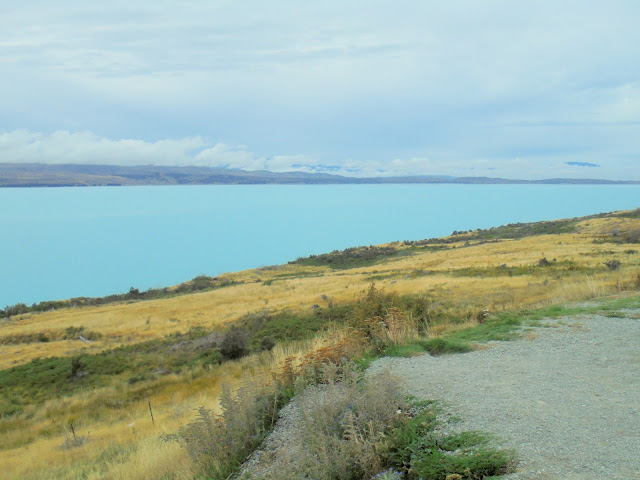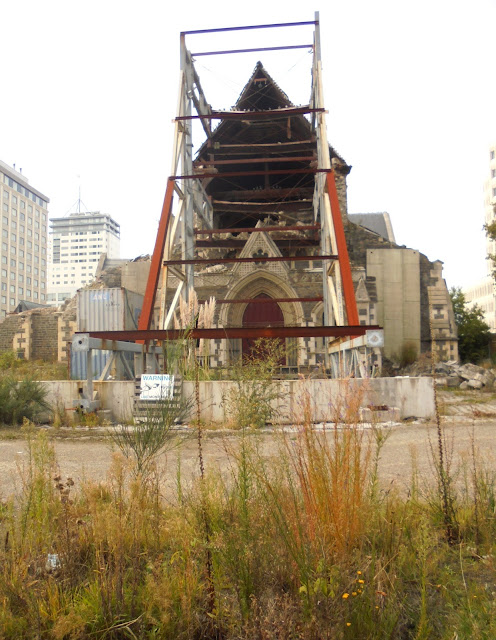Friends. They are one of life's sweetest rewards, especially when you are traveling. We were so pleased to catch up with our friends on New Zealand's North Island, and having spent about a month in Australia before returning to Kiwi land, seeing our old friend Stu on the South Island added to our pleasure. Kevin worked with Stu in England, but while we were only there a year, Stu stayed on for 22 years. (Stu had a grandparent that was born in England, so, as a New Zealander, he had patrial rights.)
 |
We checked out this charming pub in Timaru with Stu.
|
 |
| The lobby featured a somewhat disturbing mixture of styles. |
 |
| I don't know what this Mao-inspired rooster is supposed to represent. |
However, our room was spacious, comfortable, and clean, so we had a relaxing stay there. And the free parking was a bonus.
Near Timaru, we explored the ancient Maori rock paintings.
The age of the rock art, from what I could find out, is thought to be "only" about 500 years old. But I am always entranced by such depictions and wonder about the people who made it and why they felt compelled to leave this images. It is also thrilling to see them at sites that are not over-run with tourists.
Stu also accompanied us on a day trip to Mt. Cook, where we stopped at Lake Tekapo to view the Church of the Good Shepherd, an old rock chapel constructed in 1935 at a lovely spot on the lake.
Even on a cloudy day, the scenery was impressive. The views around Mt. Cook, or Aoraki (cloud-piercer) in the Maori language, did not disappoint.
When we reached a viewpoint overlooking the Abel Tasman Glacier, the beauty of the area was only surpassed by the startling realization of how much the glacier has retreated in recent years. If anyone wants evidence of global climate change, come here!
The last time Stu visited here over 20 years ago, the areas covered by meltwater in the photograph were covered by the glacier. According to Wikipedia, the Abel Tasman Glacier is New Zealand's largest glacier at 27 kilometers (17 miles). But between 2000 and 2008, the glacier retreated 3.7 kilometers (2.29 miles). In the 1990s, it was retreating about 180 meters (590 feet) per year, but now the rate of loss has increased, and it is calculated to be between 477 to 822 meters (1,565 to 2,697 feet) per year. In the next 10 to 20 years, the glacier is expected to be entirely gone.
After the sobering experience of viewing the glacier's retreat, we returned to Timaru, which also has the distinction of being one of the few places in New Zealand where the Little Blue Penguins, the world's smallest, come ashore. We did not have time to look for them until much later, when we returned from Dunedin (next post), but sadly, when we did, the only penguin we saw was on a sign.
We waited till the moon rose, and it began to get chilly. But while we did not see the little penguins, we were happy to know they were coming there, as we took in the glittering view of the port at night.























































